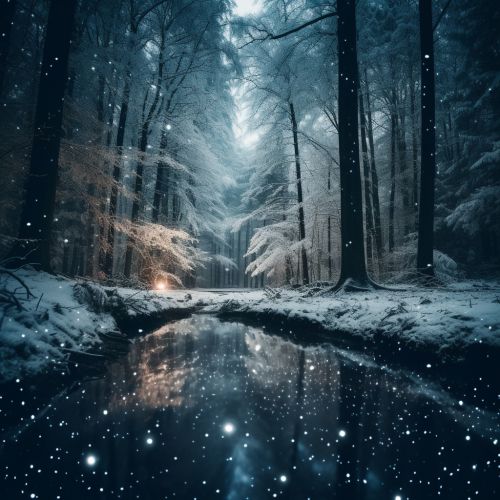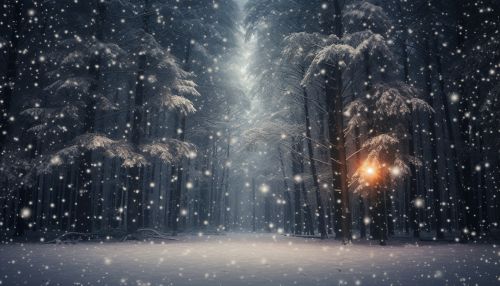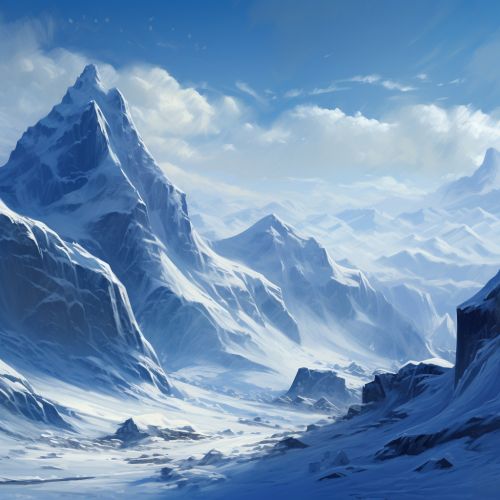Snow
Introduction
Snow is a form of precipitation in the form of crystalline water ice, consisting of a multitude of snowflakes that fall from clouds. The process of this precipitation is called snowfall. It occurs when the atmospheric temperature is at or below freezing (0 degrees Celsius or 32 degrees Fahrenheit) and there is a minimum amount of moisture in the air. If the ground temperature is at or below freezing, the snow will reach the ground.


Formation
Snow begins as water vapor in the atmosphere that condenses directly into ice without going through the liquid stage. This process is known as deposition. Each snowflake is unique and is formed when an ice nucleus attracts supercooled water droplets, which freeze in hexagonal-shaped crystals. Snowflakes in and of themselves are clear, but diffuse reflection of the whole spectrum of light by the small crystal facets makes the snow appear white.
Classification
Snow can be classified into six main types, wet, dry, artificial, lake effect, thundersnow, and graupel. Wet snow is snow that has a high liquid content, dry snow is low in moisture, and artificial snow can be used in a controlled environment such as a snow dome. Lake effect snow is produced in certain geographical areas and thundersnow is a snowstorm with thunder and lightning. Graupel, also known as snow pellets, is snow that has a round shape due to rapid freezing.
Accumulation and Melting
Snow accumulation refers to the amount of settled snow on the ground. It is measured in either centimeters or inches. Snowpack is the total snow accumulation during the season or year. Melting occurs when temperatures rise above freezing, causing the snow to turn back into water. This can lead to avalanches or flooding if the melting is rapid.


Impact on Environment
Snow plays a significant role in the environment by providing insulation during winter, influencing the distribution of plant species, and providing a water source. Snow cover can protect plants and animals from extreme cold. The melting of snow in spring provides a source of water for plants, animals, and humans. In addition, snow can affect the albedo of the earth, reflecting sunlight back into space and helping to regulate the earth's temperature.
Recreation and Sports
Snow is also important for recreation and sports. Many winter sports, such as skiing, snowboarding, and snowmobiling, depend on snow. In addition, snow can be used to make snowmen and snow forts, and for snowball fights. Snow tourism is a significant part of the economy in many regions.
Hazards
While snow can be beautiful and fun, it can also be hazardous. Heavy snowfall can cause travel disruptions, power outages, and structural damage. Avalanches are a serious risk in mountainous areas. In addition, exposure to cold and snow can lead to frostbite and hypothermia.
